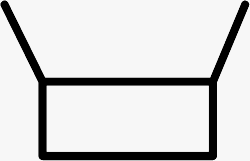Lifecycle Assessment: Upcycled leather vs Alternative leathers
When we decided to use upcycled leather to create a more sustainable handbag, we were pretty confident that that was the most sustainable option there was. It has a couple critical advantages over alternatives--
This was just a hypothesis, though. The proof is in the pudding, as they say. We knew we needed to conduct a complete Lifecycle Assessment to validate our findings, so we recently partnered with the graduate students in Columbia University's Sustainability Program to do a Lifecycle Assessment on our products, compared to common alternatives, ranging from leather, to PU, to bio-based alternatives. In this blog post, we will summarize the process and results of the assessment. It is important to note that this is not a third party verified LCA ($$).
1. The Scope
Build an LCA measuring GHG emissions for the Bucket Bag (one of our largest, most popular bags).
Consider, analyze and evaluate sustainable leather alternatives.
Compare HYER GOODS’ emissions to conventional and sustainable leather.
Develop recommendations for the lowest impact option based on the LCA findings and analysis.
2. The Process
Collect primary and secondary data on inputs and outputs
✔ Collect primary data from suppliers
✔ Create our LCA inventory analysis
✔ Collect Emission Factors
✔ Calculate
3. The Data: Alternative Leather Emissions
The below chart contains the data compiled on various leathers and leather alternatives.
| Type of Leather | price per m2? | repurposed? | % PU or PVC? | Production location? | Quality of product (re-uses?) | Full LCA? | kgco2e per FU? per m2 | Source (LCA) | Source (company website) | |
|---|---|---|---|---|---|---|---|---|---|---|
| Cactus Leather | "on par with genuine leather" | no, cactus plantation | yes, 65% PU | Mexico | 10 yr | yes, inc transportation | 1.39 // 3.49 | https://desserto.com.mx/e-lca | https://fashnerd.com/2020/10/the-downside-of-sustainable-milestones-made-by-plant-and-plastic-hybrids/#:~:text=Tackling%20misleading%20factors%20in%20the,of%20the%20material%20by%20weight. | |
| Pineapple Leaf leather | <54 USD | yes | yes, coating | Spain | 5 yr | Not full but some processing emissions reported | 5.9 | https://www.sciencedirect.com/science/article/pii/S0959652620355165 | https://www.ananas-anam.com/ | |
| PU/PVC leather | low cost | No | yes | globally | 4-6 yr | https://drive.google.com/file/d/1R-7INU-laQRbVylZpaytAJPHhaPw-5qM/view | https://www.semanticscholar.org/paper/An-overview-on-the-environmental-impacts-of-leather-Hultkrantz/b122c9c97c95f8fc3fb322989a56dbf929515d46 | |||
| Leap (apple) leather | >130 USD | Yes, food waste | partial? | Denmark | No, but end of life research being conducted | 7.6 | https://cdn.shopify.com/s/files/1/0137/7098/1462/files/LCA-Appleskin.pdf?v=1636566855 | https://www.explore-leap.com/ | ||
| Corn? | DNF | PU made from corn, CO 57%, - PU 43% - BIOBASED 67% | Italy | DNF | yes | 26,785 kg co2e per 2.2m^2 // 13 | I have the PDF , got it from the company on email | https://www.fiscatech.com/intrecci/?lang=en | ||
| Normal leather | no | no | Taiwan | its from cow to stockist | 73kg CO2e /m^2 | via sciencedirect.com |
4. The Data: Upcycled leather emissions
Based on voluntary data shared by our manufacturing, warehousing and internal team, the emissions for each stage of our process were compiled.

Using that data, a full LCA was done (the data is quite heavy, so the results are summarized below.
It is important to note that this LCA was conducted based on data collected when the HYER GOODS supply chain was based in India. We have since changed our sourcing, however the supply chain is now in China and we continue to source all leather locally in the same place it was manufactured.
The summary of the LCA is shown in the below charts.
5. The Results: Deadstock Leather LCA vs Bio-Based Leather LCA vs PU Leather LCA vs Virgin Leather LCA
All LCAs were conducted based on the same product, our Bucket Bag, manufacture in India and shipped to the US by air.
What is the lifecycle assessment of an upcycled leather bag, manufactured in India using local waste?

What is the lifecycle assessment of a virgin leather bag?

What is the lifecycle assessment of a PU leather bag?
What is the lifecycle assessment of a cactus leather bag?

The Conclusion:
HYER GOODS deadstock leather is the lowest emitter compared to vegan and virgin leather. HYER GOODS deadstock leather is also the lowest emitter compared to vegan and virgin leather.
HYER GOODS saves 16 kg CO2e compared to virgin leather (that’s a whole Hyer Goods bag!). The reduction in emissions is equal to charging your phone 2,000 times, or 66 trees saved in 1 year or 5 acres of forest.

If you like high quality, durable leather bags without the impact, check out our upcycled handbags.







Leave a comment